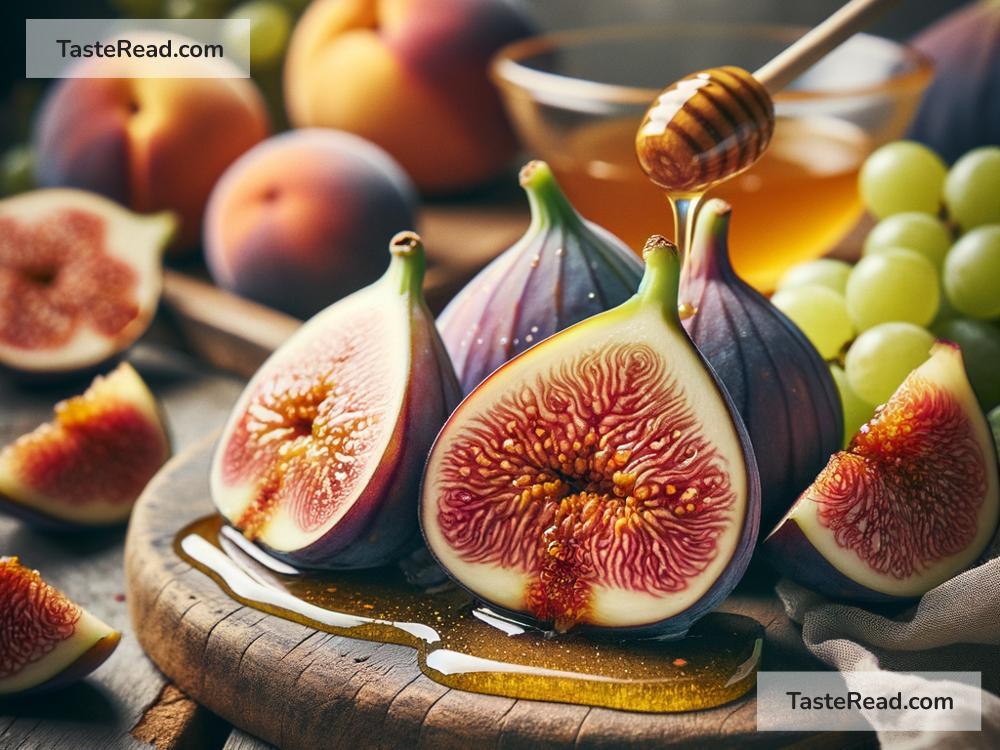Why Fruits Like Figs Have a Unique Honey-Like Flavor
Have you ever taken a bite of a ripe fig and noticed its sweet, honey-like flavor? Figs have an enchanting taste that sets them apart from other fruits. They aren’t just sweet; they’re rich, complex, and almost magical. But what makes figs — and other fruits — taste this way? Let’s explore the science and nature behind the delicious flavor of figs and why some fruits offer a honey-like sweetness.
The Natural Sweetness of Fruits
Fruits are nature’s candy. They are packed with natural sugars, which give them their sweet taste. These sugars are primarily glucose, fructose, and sucrose. The amount and balance of these sugars depend on the type of fruit, the time it was harvested, and its growing conditions. For example, figs contain a high concentration of glucose and fructose, which provides them with an intense, natural sweetness.
But figs don’t just taste sugary like plain candy. Their flavor is deeper, more complex, and layered with notes that resemble honey or caramel. This unique taste is a result of natural chemical compounds present in the fruit, its ripening process, and even its relationship with nature.
Why Figs Are So Special
Figs are ancient fruits that have been enjoyed by humans for thousands of years. Their taste isn’t just sweet but is also packed with subtle hints of nuttiness, floral notes, and rich syrupy undertones. But what’s behind this honey-like flavor?
Here are the main reasons figs taste so unique:
1. Ripening Process
Figs are one of the few fruits that ripen directly on the tree. Unlike bananas or apples, which you can ripen after picking, figs don’t become tastier once removed from the tree. Instead, they need time to develop their full flavor and texture while still attached to the branches.
As figs ripen, their natural sugars intensify, and their flesh becomes softer and juicier. During this process, enzymes in the fruit break down components like starches, transforming them into sweet sugars. The riper a fig becomes, the sweeter and richer it tastes — and this is what makes bites of perfectly ripe figs reminiscent of honey.
2. Natural Chemical Compounds
Figs are home to specific chemical compounds called “volatile organic compounds” (VOCs). These are responsible for the distinctive aromas and flavors of fruits and other foods. In figs, these compounds include aldehydes, esters, and terpenes, which give the fruit its unique honey-like fragrance and flavor.
Essentially, these compounds work together like a symphony. When you bite into a fig, the sugars don’t just give you a simple sweetness. Instead, their VOCs create a layered sense of flavor that feels floral, syrupy, and richly aromatic, much like honey.
3. The Fruit and Pollination
Figs have a fascinating connection to a tiny insect — the fig wasp. Most figs rely on fig wasps to pollinate them in a unique partnership called mutualism. Fig wasps enter the fig to lay their eggs while pollinating the flowers hidden inside. While this may sound unusual, this relationship ensures the fig develops fully and sweetly.
The process may contribute indirectly to the fruit’s flavor. When figs form, they develop sugars and other compounds that complement their pollination system, resulting in the unique taste. This partnership between fruit and animal reflects the delicate balance of nature and adds a unique twist to the production of figs.
4. Nutritional Richness
Figs aren’t just delicious; they’re packed with vitamins, minerals, and antioxidants. These nutrients give them their rich taste while also making them a healthy treat. Their natural sweetness is unprocessed and comes straight from the tree, which is why it tastes so pure compared to sugary snacks.
Are Other Fruits Like Figs?
While figs are famous for their honey-like flavor, other fruits also carry similar qualities. Dates, for example, are incredibly sweet and have a caramel-like taste. Some varieties of mangoes, peaches, and ripe persimmons have hints of honey in their flavor as well.
What makes these fruits resemble honey is the combination of natural sugars, ripening processes, and their unique collection of VOCs. However, every fruit has its own “personality,” resulting in distinctive flavors that make each bite special.
How to Enjoy the Flavor of Figs
If you’ve never tried figs, they’re worth tasting. Snack on ripe figs as they are, or pair them with other foods to enhance their flavor. Figs work wonderfully with cheeses like brie or goat cheese and can be drizzled with actual honey for an even sweeter treat. You can add figs to salads, desserts, or breakfast dishes like oatmeal and yogurt.
If fresh figs aren’t available where you live, dried figs are a great alternative. They’re slightly more concentrated in sweetness and perfect for snacking or baking.
Conclusion
Figs are more than just sweet fruits; they’re nature’s gift of complexity and richness. Their honey-like flavor comes from their high natural sugar content, unique ripening process, and the fascinating chemistry within them. Plus, their connection to fig wasps and pollination gives them an incredible story that adds to their charm.
The next time you bite into a fig, savor its sweetness — you’re enjoying a fruit that’s been perfected over thousands of years by nature itself. Its honey-like taste is a reminder of the amazing flavors that can come from the Earth.


